Summary of 2023 Issues
Nature Conservation 2024 — 30. 5. 2024 — Články bez rubriky — Print article in pdf
Nature Conservation in Uzbekistan
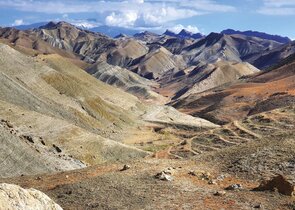
Uzbekistan, a pearl of the Silk Road, is an area of extraordinarily accumulation of well-preserved medieval Islam towns and monuments remembering the then extensive empire controlling considerable parts of Central and Southwest Asia. The current Republic of Uzbekistan boasts from the natural science point of view valuable areas of international importance. The country has legislatively developed nature conservation system aiming particularly at protecting the human environment; nevertheless, it can only in a limited way reduce natural wealth destruction which has been threatened by demands from the rapidly developing most populous Central Asian republics. Therefore, we can visit a UNESCO World Heritage Site as well as to watch one of the world’s biggest environmental disasters ever there.
Nature Conservation 2024 — 30. 5. 2024 — International Nature Conservation — Print article in pdf
CITES Fifty Years Old. Notes on What Was, Is and Will Be
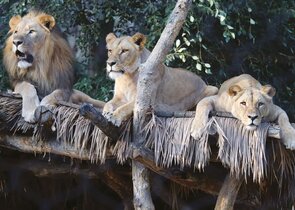
If there are no customers, there will be no illegal wildlife trade.
Jane Goodall interviewed by Lauren Kearney (2016)
Five decades provide a suitable possibility to consider the birthday person’s life up to now and in future. Therefore, on the occasion of the 50th anniversary of the Convention on International Trade in Endangered Species of Wild Fauna and Flora (CITES) we not only remember establishment and mission of the important international hard law but we also try, although with a certain amount of subjectivity, to assess its implementation in the Czech Republic.
Nature Conservation 2024 — 30. 5. 2024 — International Nature Conservation — Print article in pdf
A Hope from Gabon. Protected Areas, Ecosystem Services, and Economic Diversification
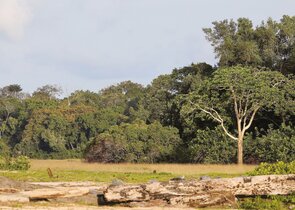
The country in a nutshell
By African standards, Gabon located on the Equator in the Gulf of Guinea is a small country (267,670 km2); on the equator in the Gulf of Guinea (3.5 times the Czech Republic’s territory), it has only around 2.2 million inhabitants. In The capital, Libreville, less than a million people lives, and the total proportion of the urban population is close to 90%. The number of inhabitants is growing by 2.5% annually, female fertility is approx. 4. Roughly, 80% of the country’s territory is covered by primary or secondary rainforest and a smaller part by savannah. Only approx. 1.2% is used as arable land: at the same time, the rainforest coverage has been practically stable (only a 1% decrease in 10 years).
Nature Conservation 2024 — 30. 5. 2024 — International Nature Conservation — Print article in pdf
Nature Conservation Agency of the Czech Republic Contributes to Armenian Biological Diversity Conser

In 2021–2023, the Nature Conservation Agency of the Czech Republic (NCA CR) together with the Finnish Environment Institute SYKE, implemented a two-year project entitled as Strengthened protection and sustainable use of biodiversity in Armenia in line with the European standards funded from the European Union’s Twinning programme. The main project partner and beneficiary of the project outputs was the Ministry of the Environment of Armenia.
Nature Conservation 2024 — 30. 5. 2024 — International Nature Conservation — Print article in pdf
How the War Has Affected Ukrainian Protected Areas

The damage caused to Ukraine’ s nature as a result of the full-scale military invasion of the Russian Federation started on February 24, 2022 has had a pan-European dimension and the consequences of hostilities for biodiversity will be seen across the continent. The network of protected areas in Ukraine is an essential component in preserving Europe’s biodiversity. The network protects mountain ecosystems within the Carpathian and Crimean Mts., key areas for migration and nesting of waterfowl on the coast of the Azov and Black Seas, peat-bogs, natural forests on Polissya, and unique steppe ecosystems on the East and the South of Ukraine. Protected areas are home to many wildlife species and represent different natural habitat types, some of them are unique within Europe including endemic ones.
Nature Conservation 2024 — 30. 5. 2024 — International Nature Conservation — Print article in pdf
Ten-thousand-year History of a Pool – What Peat Hides in the Březina Nature Reserve in the České Stř
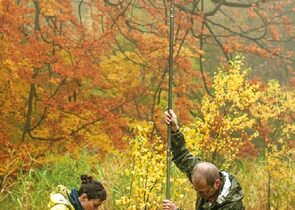
Sediments of water bodies and peatlands harbour archives of the past. Investigation of them may provide information about what past ecosystems looked like. Which changes have natural ecosystems undergone over thousands of years? How have they responded to climate change or shifts in landscape exploitation by humans? Answers to these questions may help setting limitations to site management as well as defining a baseline for the natural ecosystem restoration. They can show us which changes have taken place in a particular area many times in the past and what, on the other hand, is an unprecedented present issue requiring active management. We will show the possible application of palaeoecological research in nature conservation on the example of the Březina Nature Reserve (NR) and Site of European Importance (SEI, pursuant to Act No. 114/1992 Gazette on Nature Conservation and Landscape Protection, as amended later, the term for Site of Community Importance, SCI, later Special Areas of Conservation, SAC, under the European Union’s Habitats Directive), a unique wetland in the České Středohoří/Central Bohemian Uplands. It may be an example for other sites at which sediment elimination often destroys the heritage which may turn out to be a basic natural archive if carefully investigated.
Nature Conservation 2024 — 30. 5. 2024 — Research, Surveys and Data Management — Print article in pdf
Look Back at the Presidency of the Czech Republic in the Council of the European Union

It doesn’t matter where you are coming from.
All that matters is where you are going.
Brian Tracy: The psychology of achievement (2002)
In international agenda related to nature conservation/biological diversity, the second half-year of 2022 was marked by a whole range of actions both on the global or pan-European level and in the European Union. Due to the COVID-19 pandemic, many meetings of Multilateral Environmental Agreements (MEAs), i.e. hard laws, and of some United Nations bodies which should adopt their future direction had to be repeatedly postponed and rescheduled. Therefore, they heavily accumulated in the second half of 2022. The Czech Republic implemented its already second presidency in the Council of the European Union (CZ PRES 2022) just between 1 July and 31 December 2022, thus facing an unprecedented challenge.
Nature Conservation 2024 — 30. 5. 2024 — Nature Conservation Legislation — Print article in pdf
On the Origin of Czech Wolves Using the Slavkovský les/Slavkov Forest Mts. As an Example
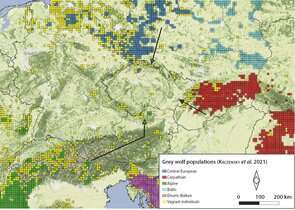
Despite the considerable effort of scientists and conservationists to clarify all aspects of the biology of the Grey wolf (Canis lupus) and its expansion in Central Europe, various misconceptions and mistakes live on with the general public, which may lead to needless conflicts. The purpose of this contribution is to clarify the origin of Czech wolves in the light of the return of wolves to Central Europe, using the example of an area with a rich hunting tradition and of extraordinary importance from the point of view of nature conservation.
Nature Conservation 2024 — 30. 5. 2024 — Research, Surveys and Data Management — Print article in pdf
Restoration of Meanders on the Dyje/Thaya River
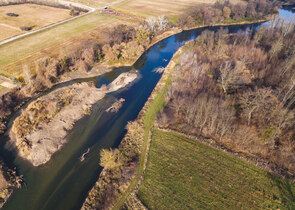
The Dyje/Thaya River, together with the Morava River, is surrounded by the largest and ecologically most valuable floodplain complex of Central Europe. By straightening its course in the 1970s and 1980s, the Dyje/Thaya River was shortened by nearly 3.2 km. At the same time, dikes preventing floodings were built on both banks along the state border stretch of the river. These measures had to stabilise the border between Austria and Czechoslovakia on the one hand, and to ensure prevention and control on the other. The whole border stretch being 16.5 kilometres long was for a long time closed by the Iron Curtain. After the above water management measures, there were more than 20 remnants of the original river bed were preserved in the floodplain: these are backwater river branches/cut-off arms or oxbows of various character. Over the years, however, all these fragments of the original Dyje/Thaya riverbed became strongly silted, thus developing themselves towards a rapid termination. The modified river bed caused by puncturing the branches displayed low morphological value and straitening the watercourse contributed to accelerating water outflow from the landscape there. From a point of view of climate change adaptation, this was an unsatisfactory situation. Therefore, the river management authority proceeded to restoration measures.
Nature Conservation 2024 — 30. 5. 2024 — Nature and Landscape Management — Print article in pdf



